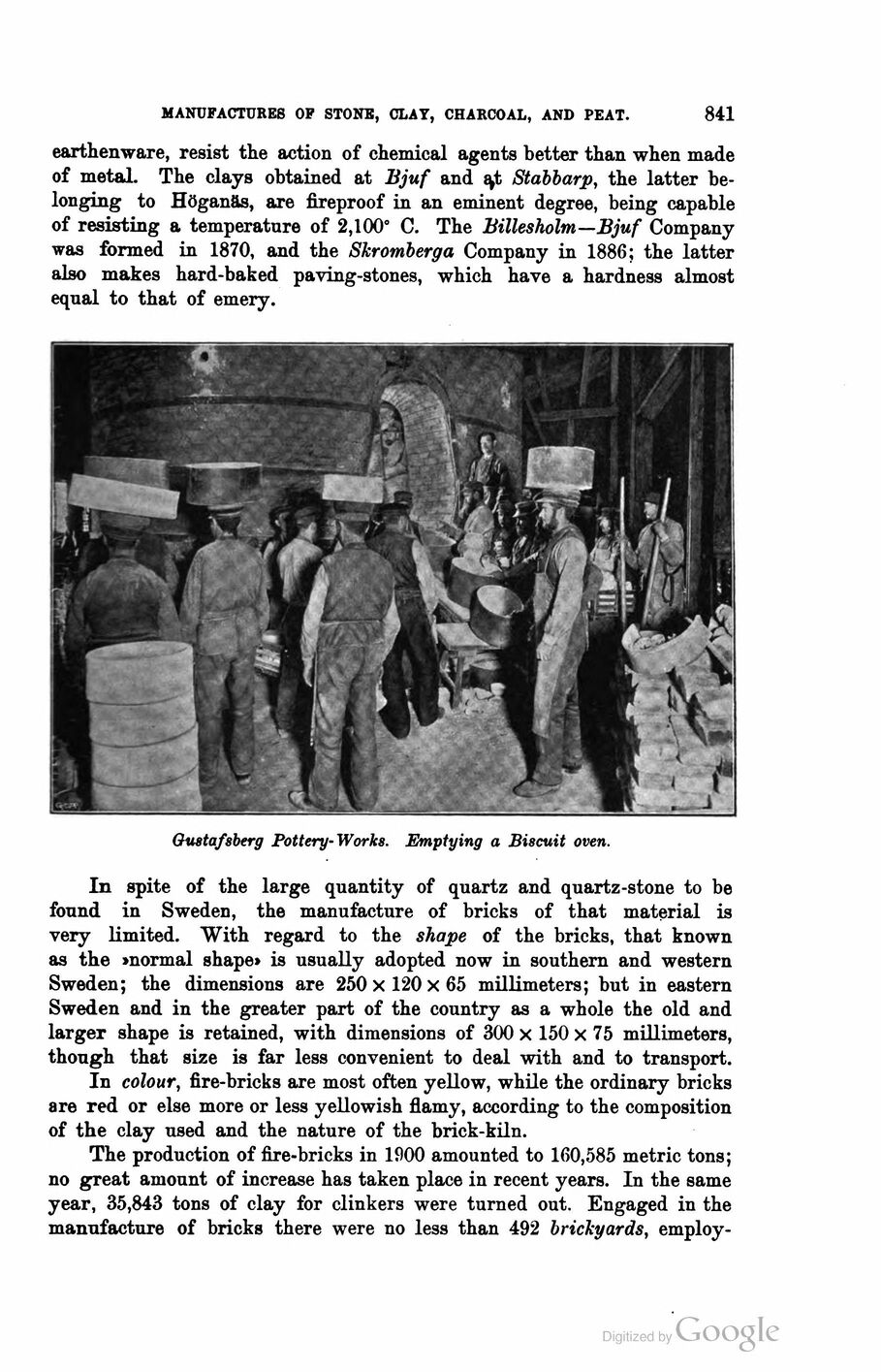
Full resolution (JPEG) - On this page / på denna sida - Second part - X. Manufacturing Industries. By Å. G. Ekstrand, Ph. D., Chief Engineer, Control Office of the Department of Finance - 8. Manufactures of Stone, Clay, Charcoal, and Peat - Earthenware

<< prev. page << föreg. sida << >> nästa sida >> next page >>
Below is the raw OCR text
from the above scanned image.
Do you see an error? Proofread the page now!
Här nedan syns maskintolkade texten från faksimilbilden ovan.
Ser du något fel? Korrekturläs sidan nu!
This page has never been proofread. / Denna sida har aldrig korrekturlästs.
manufactured goods of stone, clay, charcoal, and peat.
841
earthenware, resist the action of chemical agents better than when made
of metal. The clays obtained at Bjuf and fyt Stabbarp, the latter
belonging to Höganas, are fireproof in an eminent degree, being capable
of resisting a temperature of 2,100° C. The Billesholm—Bjuf Company
was formed in 1870, and the Skromberga Company in 1886; the latter
also makes hard-baked paving-stones, which have a hardness almost
equal to that of emery.
In spite of the large quantity of quartz and quartz-stone to be
found in Sweden, the manufacture of bricks of that material is
very limited. With regard to the shape of the bricks, that known
as the »normal shape» is usually adopted now in southern and western
Sweden; the dimensions are 250x 120x65 millimeters; but in eastern
Sweden and in the greater part of the country as a whole the old and
larger shape is retained, with dimensions of 300 x 150 x 75 millimeters,
though that size is far less convenient to deal with and to transport.
In colour, fire-bricks are most often yellow, while the ordinary bricks
are red or else more or less yellowish flamy, according to the composition
of the clay used and the nature of the brick-kiln.
The production of fire-bricks in 1900 amounted to 160,585 metric tons;
no great amount of increase has taken place in recent years. In the same
year, 35,843 tons of clay for clinkers were turned out. Engaged in the
manufacture of bricks there were no less than 492 brickyards, employ-
Oustafsberg Pottery-Works. Emptying a Biscuit oven.
<< prev. page << föreg. sida << >> nästa sida >> next page >>